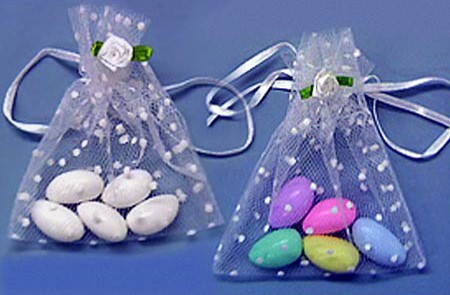The Ice Wars

Le Bon Genre No4, 1801
A CHRISTMASSY SORT OF STORY ABOUT ICE CREAM
Nobody sensible in Europe had given a tinker’s cuss about any sort of use for ice. In the English winterland, cold killed. It was difficult for most to eat enough to generate adequate body heat. Children were fed beer to boost their calories for school. Very few were fat.
The dissolution of the monasteries had released a vast amount of wealth, largely pocketed by the privileged. By the 17th century, frivolous fashion was affordable by some, swagger was the word, wine was prime.
It was deemed necessary that the chic Frenchy white wine was to be drunk cool. Ice was cool, but with it came the other killers, cholera and typhoid: we understood that. But, the bottles and glasses could be cooled harmlessly.
The landed, the gentry, set about hacking and sawing the winter ice from their rivers and lakes. Ton after ton was trundled for mile after mile to the newly conceived “ice houses”. Deep pits had been dug, lined with brick, covered by roofing. Here the ice was stored for summer use, insulated by straw and sawdust.
King James I built two, in Greenwich Park and at Hampton Court. Charles II had an especially large one in Green Park. Most substantial estates would have had an ice house by the late 18th century, by which time they had also become ideal larders for perishable food.
Of course, it wasn’t James I who had had the bright idea; it was dreamt up in China – before 1100 BC. By 400 BC, the Persians were constructing intensely sophisticated yakhchāls (yakh = ice; chal = pit) for making and storing ice and for preserving food in their desert – monumental 50 foot mud cones above underground spaces of up to 18,000 cubic feet.
And it wasn’t Marco Polo who brought the idea back from the court of Kublai Khan; that’s rubbish apparently, but the Italians did get to know first.
On his restoration in 1660, King Charles II reinstated the Stuart tradition of the Royal family dining in public. Breakfast and supper were private meals, but, once a week, the Royal mid-afternoon dinner was taken in front of an invited audience – often in the memorialised Whitehall Banqueting House. It was at one of these dinners that the public had its first sight of “ice cream”. King Charles’s Italian chef, party to the closely guarded secret of its making, had presented this exotic dessert, accompanied by a dish of white strawberries. It caused a true sensation.
Unlikely as it might seem, this miniscule event could have been the catalyst for the subsequent burgeoning of the inter-continental ice industry.
The super-secret technique of ice cream making depends upon the ability to freeze cream. This could only be achieved through the newly discovered “endothermic effect” created by adding common salt to ice, which significantly lowers its melting point. Using a metal container filled with sweetly flavoured cream placed within a wooden barrel of salt and ice had the desired effect of drawing off any remnant of heat, solidifying the cream to scoopability.
Slow to take off, the soon to be exponential ice cream fad percolated throughout Europe. The Italian Francesco dei Coltelli founded his ice cream cafés in Paris in 1651, and, 50 years later, he was operating 250. The first ice cream recipe in English was published in London in 1718.
By 1744, ice cream had been adopted by North America, shipped in by Quaker colonists. The preservative value of ice was quickly noted.
The rapidly increasing emigrant population of America promoted a massive demand for ice as a food preservative for meat and for fruit and vegetables, let alone the appetite for ice cream. At its peak in the late 19th century, the ice industry employed 90,000, and was using ice houses with storage capacities of up to 250,000 tons each. The new railroads carried ice across the continent. Wooden ice ships crossed the oceans, supplying the insatiable needs of India and South America – and China, would you believe.
Various fantastical machines had been created to manufacture ice during the 19th century. Initially extortionately expensive, but by the 1870’s “plant ice” had started its domination of the world market.
Britain was now buying its ice from Norway, from purpose-built lakes. Due to the German blockade of the North Sea, natural ice became a scarce resource during the First World War. Natural ice was also open to bacterial contamination during its transportation, and adverse publicity took its toll.
The “ice box” was a vital piece of household equipment. These wooden “little ice houses” lined with iron, these “refrigerators”, were starting to be common by the 1840’s: they held three pounds of ice. The American passion for drinks containing crushed ice – lager, drinking water, milk, mint juleps – was spurned by the health-aware British, but the ability to store small family quantities of perishable food was welcomed.
By 1923, the Frigidaire Appliance Company of America had perfected the electrical self-contained household refrigerator. They were an expensive luxury, and it was not until 1945, post the Second World War, that the “fridge”, le frigidaire, started to become commonplace in Europe.
My father had owned a house in France since the 1930s, and, in 1946, he drove our little family in his Daimler through a war-torn, detritus strewn countryside to the Mediterranean coast, guided by a supernaturally accurate RAC map. He knew the villa still had a roof, as a kind relative had checked the air reconnaissance records of MI4.
Our Belgian housekeeper had made himself comfortable during the Italian occupation by renting the house to a proprietor of bordellos. Nothing of note was missing – just quite a few broken drinking glasses. The ice box was in its usual place in a cool, dark corridor outside the kitchen. No ice though. It was ordered, and the welcome weekly delivery turned up on an ancient open lorry, a muscled pair axing off half a metre from a stack of ice beams to slip into its compartment. It was the first time I had seen an ice box.
My father was a surgeon, and would have been brought up with “cryotherapy”, the medical use of cold temperatures. Now somewhat defunct, cryotherapy had been commonly used as an analgesic and as an anti-inflammatory for thousands of years. Recent research has suggested that it has little value in modern medicine: at best the use of cryotherapy is categorised as “controversial”. Now that’s a disappointment. But, beauticians still swear by it: in their good book, it reduces facial wrinkles and puffy eyes, and shrinks localised body fat. Now that’s really useful.
. . . .
My mistress’ eyes are nothing like the sun;
Coral is far more red than her lips’ red;
If snow be white, why then her breasts are dun;
If hairs be wires, black wires grow on her head.
I have seen roses damasked, red and white,
But no such roses see I in her cheeks;
And in some perfumes is there more delight
Than in the breath that from my mistress reeks.
I love to hear her speak, yet well I know
That music hath a far more pleasing sound;
I grant I never saw a goddess go;
My mistress, when she walks, treads on the ground.
And yet, by heaven, I think my love as rare
As any she belied with false compare.
William Shakespeare, Sonnet 130, 1609
. . . .
[little tree]
….
look the spangles
that sleep all the year in a dark box
dreaming of being taken out and allowed to shine,
the balls the chains red and gold the fluffy threads,
put up your little arms
and i’ll give them all to you to hold
every finger shall have its ring
and there won’t be a single place dark or unhappy
then when you’re quite dressed
you’ll stand in the window for everyone to see
and how they’ll stare!
oh but you’ll be very proud….
e e cummings, 1920


